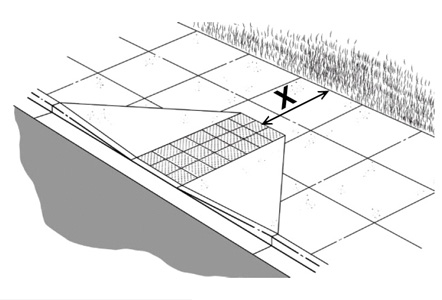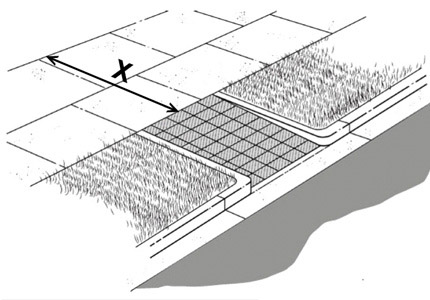E. What are the General Requirements for Curb Ramps in the ADA Standards for Accessible Design?
One way to make curb ramps compliant with Title II of the ADA is to build them in accordance with the ADA Standards. 7 Following are the key characteristics of an accessible curb ramp according to the ADA Standards:
-
The ramp run has the least running slope possible. (On a curb ramp, the running slope is the slope in the direction of pedestrian travel on the ramp run.) [§ 4.8.2]
-
For curb ramps constructed after January 26, 1992 (post-ADA), the slope must be 8.33 percent (1:12) or less. [§ 4.8.2]
-
For curb ramps constructed before January 26, 1992 (pre-ADA), including those that have since been altered, the running slope must generally be 8.33 percent (1:12) or less. However, ramp runs with greater slopes are allowed for pre-ADA curb ramps in the two following instances where space limitations prohibit the use of a slope of 8.33 percent (1:12) or less:
-
The ramp run may have a running slope of up to 10 percent (1:10) if the rise is no more than six inches. [§ 4.1.6(3)(a)(i)]
-
The ramp run may have a running slope of up to 12.5 percent (1:8) if the rise is no more than three inches. [§ 4.1.6(3)(a)(ii)]
-
-
The rise is the vertical change measured from the low point at the base of the curb ramp to the high point at the other end where the sloped portion of the curb ramp transitions with the sidewalk. Since sidewalks often have a 2 percent or less cross slope (which is the slope perpendicular to the direction of pedestrian travel along the sidewalk) to direct water toward the street for drainage, the rise of a curb ramp is often greater than the height of the curb.
-
The cross slope of the ramp run itself may not exceed 2 percent (1:50). (On a curb ramp, the cross slope is the slope perpendicular to [across] the direction of pedestrian travel on the ramp run.) [§ 4.3.7]
-
The ramp, or ramp run, must be at least 36 inches wide, not including the flared sides. [§ 4.7.3]
-
The ramp run must have detectable warnings – i.e., dome-shaped bumps – that extend the full width and depth of the ramp. [§ 4.7.7]
-
Transitions from the ramp to the walkway, gutter, and street must be flush (level) and free of abrupt level changes. [§ 4.7.2]
-
The gutter must have a slope of no more than 5 percent (1:20) toward the ramp. [§ 4.7.2]
Perpendicular Curb Ramps in the ADA Standards: Flared Sides or Returned Curbs?
The most common type of curb ramp is the perpendicular curb ramp, which intersects the curb at a 90-degree angle. Curb ramps must have flared sides if people are required to walk across them. [§ 4.7.5] The slope requirements for the flared sides depend on the width of the sidewalk at the top of the ramp, “x” in the illustration to the right. If “x” is less than 48 inches, then the slope of the flared sides must be no more than 8.33 percent (1:12). If “x” is 48 inches or more, then the flared sides may slope up to 10 percent (1:10) but not more. [§ 4.7.5; Fig. 12(a)]
When pedestrians are not required to walk across the ramp, such as where there is a non-walking surface (grass, for example) or obstructions on both sides of a curb ramp, curb ramps are allowed to have returned curbs. A curb ramp with returned curbs is required to have a landing with maneuvering space at the top of the ramp (“x” in the illustration to the left) that is at least 48 inches because people using mobility devices need an area to turn when getting on and off the ramp. [§ 4.7.5; Fig. 12(b)]
7 The bracketed references in this section refer to the applicable sections of the ADA Standards



User Comments/Questions
Add Comment/Question